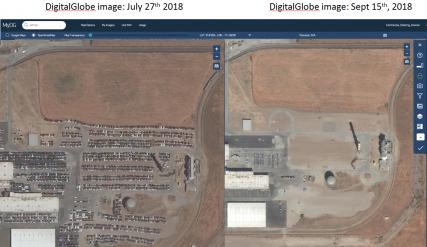 Tesla Motors CEO Elon Musk pulled a rabbit out of his hat last month making thousands of cars vanish and converting reports of production and delivery hell into market leadership for premium sedan deliveries. Following SEC legal action and a podcast where he appeared to be drinking scotch and smoking marijuana and after surrendering – temporarily – the chairmanship of the company, Musk stands vindicated by empty factory parking lots and a spiking stock price.
Tesla Motors CEO Elon Musk pulled a rabbit out of his hat last month making thousands of cars vanish and converting reports of production and delivery hell into market leadership for premium sedan deliveries. Following SEC legal action and a podcast where he appeared to be drinking scotch and smoking marijuana and after surrendering – temporarily – the chairmanship of the company, Musk stands vindicated by empty factory parking lots and a spiking stock price.
But that spiking (upward) stock price soon took another nose dive as Musk mocked the SEC’s decision and investors fled again. What endured, though, was the report from Tesla’s subsequent shareholders’ meeting showing that the Model 3 is now the best-selling mid-sized premium sedan in the U.S.
As amazing and impressive as this achievement was, it does not obscure the deeper issue of Tesla’s pursuit of automated driving. While it appears, now, that Musk misled investors and the public generally regarding the orchestration of a move to take the company private, he continues to play fast and loose with the automated driving capabilities of his cars.
According to a report in Bloomberg News, Musk sent an email indicating that Tesla needed 100 more employees to join an internal testing program linked to rolling out the full self-driving capability. Bloomberg reported that Musk wrote: “any worker who buys a Tesla and agrees to share 300-400 hours of driving feedback with the company’s Autopilot team by the end of next year won’t have to pay for full self-driving – an $8,000 saving – or for a premium interior, normally costing $5,000.
“This is being offered on a first come, first served basis,” Bloomberg reports Musk writing in his email. “Given the excitement around this, I expect it will probably be fully subscribed by noon or 1 p.m. tomorrow.”
The problem is that Musk is still referring to Autopilot as full self-driving capability when it, in fact, remains at best Level 2 with enhancements only likely to shift it to a Level 3 still requiring driver re-engagement with the driving task. This matters because the growing range of Level 2 systems – steadily advancing the capabilities of adaptive cruise control with lane keeping etc. – all appear to perform slightly differently and consumer confusion can be fatal or at least dangerous.
There is the now-infamous video of the Volvo customer at a dealership being run over by an XC60 with City Safety because a) the driver accelerated and b) the system did not have pedestrian detection. Subaru with EyeSight and Nissan’s ProPILOT are similar enhancements but with slight variations in performance. Daimler and Audi are also in the game.
GM’s Super Cruise goes all out with enhanced vehicle positioning technology from Ushr, Swift and Trimble; location data updates via wireless connections; and a driver monitor from Seeing Machines. All of these systems are Level 2, but only the GM system monitors the driver while also integrating enhanced localization.
Musk has shown he can make cars disappear and yo-yo his stock price to the dismay of short sellers and regulators. What is missing from the Tesla high wire act, though, is some candor regarding the current capabilities and long-term expectations for Autopilot.
It is worth noting the value of automated driving data imputed by Musk’s email. Musk has put a marker on data monetization at $20/hour of automated driving – but that’s probably a lowball estimate. That data is priceless to an organization that has none. Investors, meanwhile, can run that against the millions of hours of such data gathered by Cruise Automation, Waymo and others as a validation of their high flying valuations. Thanks, Elon, but it’s still not “Autopilot.”
Share this post via:







Quantum Computing Technologies and Challenges